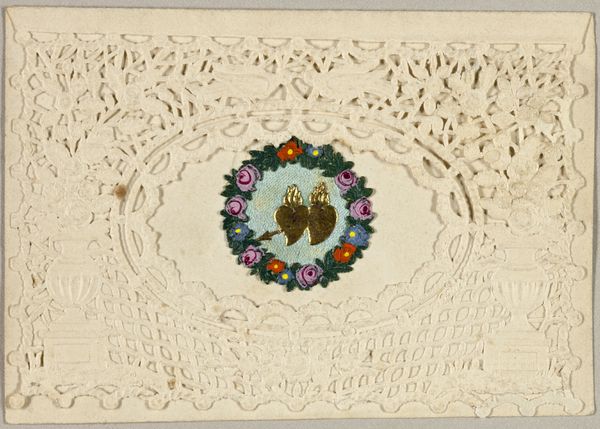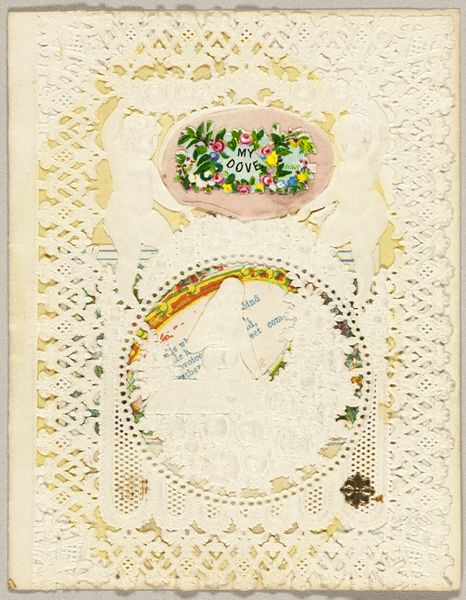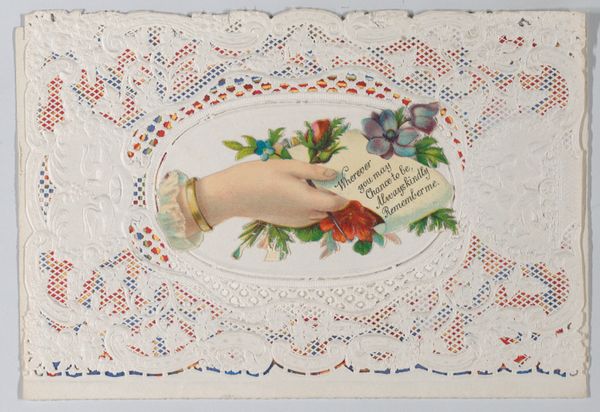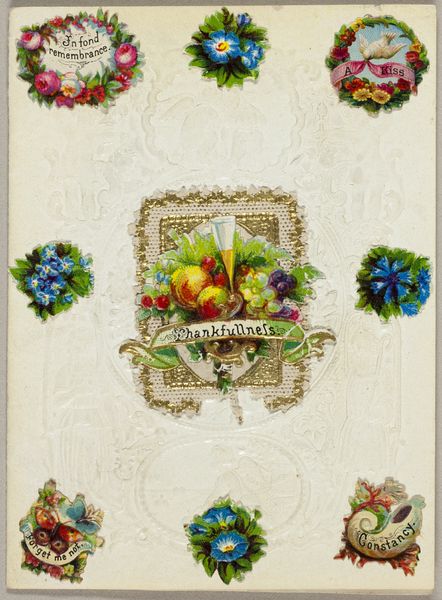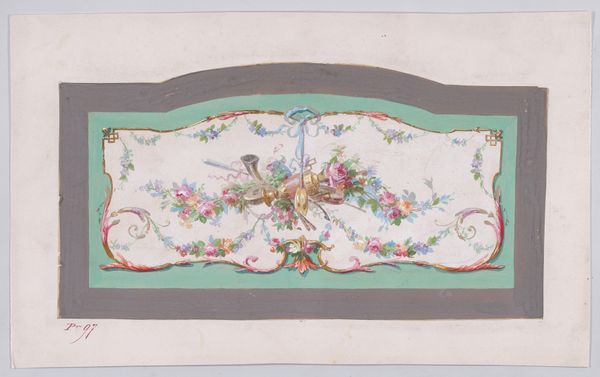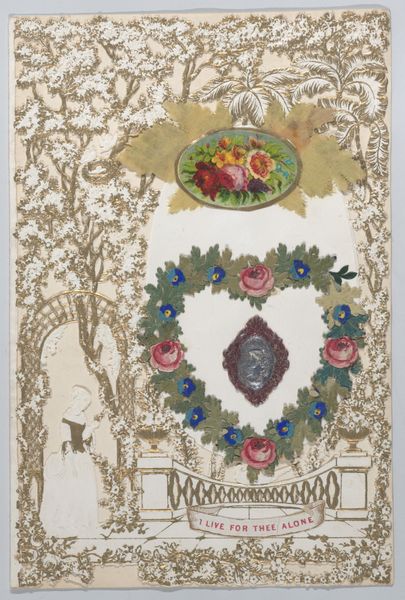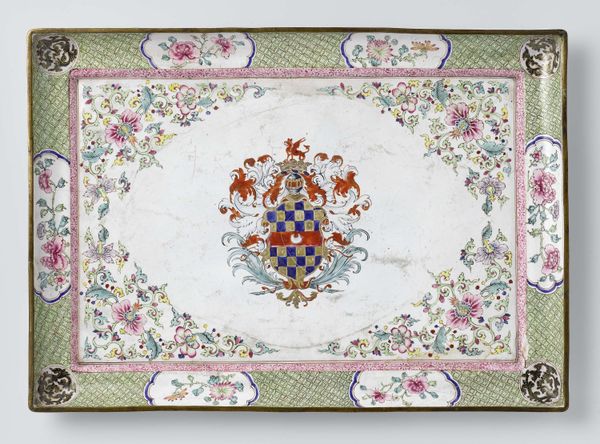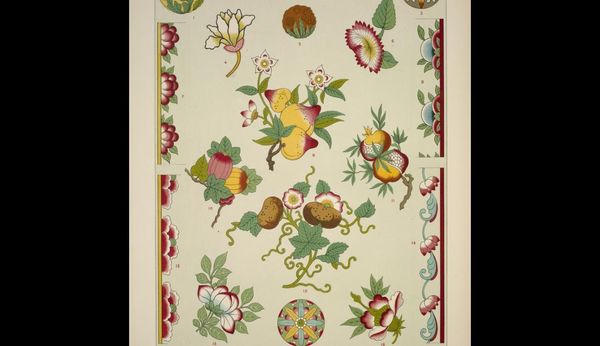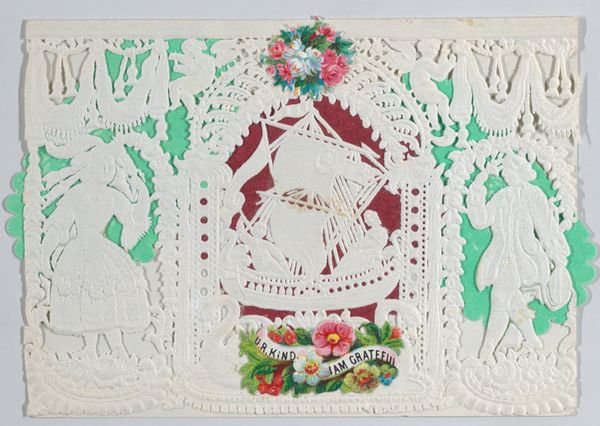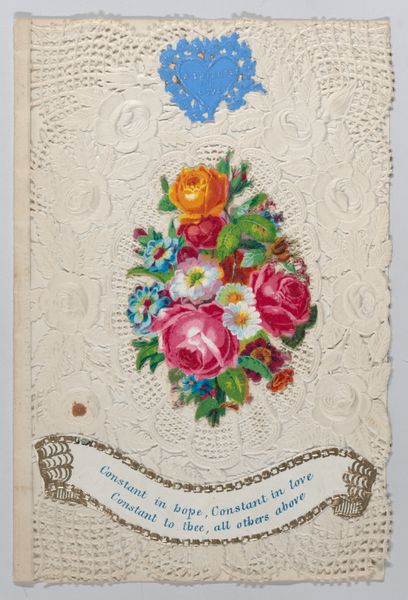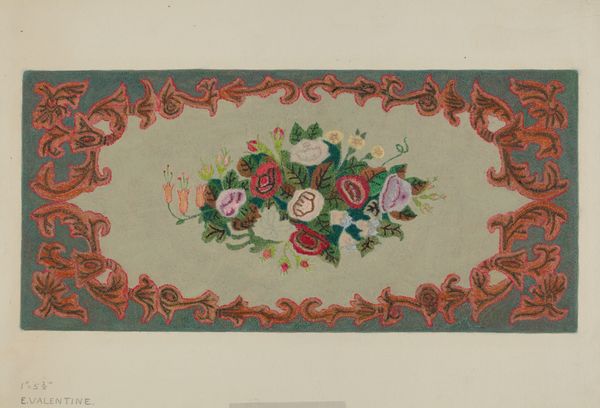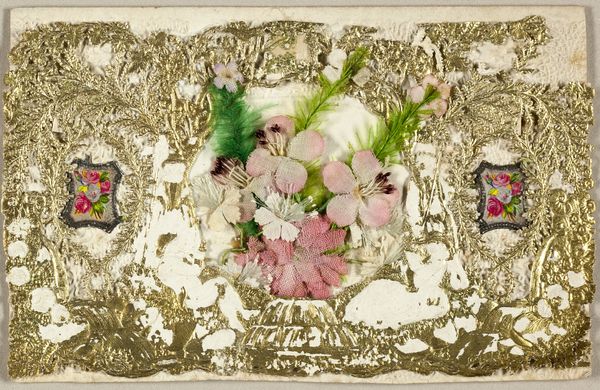
Dimensions: Width: 4 1/16 in. (10.3 cm) Length: 2 13/16 in. (7.2 cm)
Copyright: Public Domain
Curator: Welcome. We’re standing before an object titled "Valentine," dating back to 1880. It’s currently housed at the Metropolitan Museum of Art. The piece is a print, showcasing aspects of both romanticism and decorative art styles. Editor: Intricate. It feels simultaneously delicate and somewhat ornate with all the lacework, and I’m intrigued by how the printed sections are positioned amidst the negative spaces. Curator: Absolutely, it is worthwhile thinking about how this object circulated, no? Consider the means of its production. Likely made for commercial consumption rather than individual artistic expression, fitting into the rising market for sentimental objects at the time. Paper became much cheaper with industrialisation, so it would be interesting to discover who this object was affordable to at the time. Editor: You raise good points, but look closer at the visual structure. The symmetrical arrangement, the juxtaposition of naturalistic images—fruits, flowers—with the geometric lacework; these formal relationships construct meaning, generating an interplay between organic and artificial, perhaps a comment on genuine vs performative affection. Curator: True, and the choice of imagery feeds directly into this context: 'Affection's Offering' printed centrally speaks to the social custom surrounding love and courtship. This mass produced object, though, mediates this personal sentiment – making it a performance in itself. Who benefited most from its circulation? The manufacturers of the materials and those involved in the assembly line of such pretty things, more than those actually exchanging Valentines. Editor: The color palette itself evokes certain themes—pastel hues associated with sweetness and innocence—functioning as signifiers within the visual vocabulary of its time. Semiotics here provide interesting insights into a world mediated by visual symbols of emotion. Curator: Precisely. Examining "Valentine" through both a materialist and formalist lens gives insight into 19th century social rituals and cultural norms, showing us how our understandings of intimacy and consumer culture were – and still are – very intertwined. Editor: I appreciate how your reading offers a historical background, and that combined with observations regarding composition help unravel layered dimensions of affect woven within its threads and motifs.
Comments
No comments
Be the first to comment and join the conversation on the ultimate creative platform.
